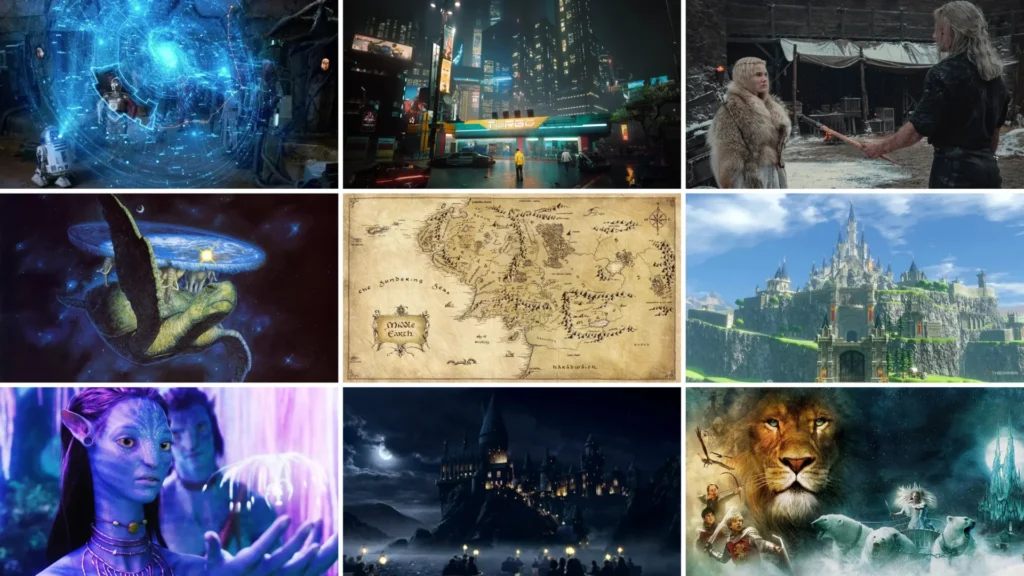In the enchanting realm of “Avatar: The Last Airbender,” the world is divided into Four Nations, each aligned with one of the four elements: Water, Earth, Fire, and Air. This acclaimed animated series not only captivates audiences with its thrilling adventures and complex characters but also with its deep cultural and elemental lore. Let’s journey through each Nation, uncovering the unique traditions, philosophies, and bending abilities that make this universe so compelling.
Avatar: The Last Airbender’s Four Nations
At the heart of the series is the concept of bending—the ability to manipulate an element—and it is around this concept that the Four Nations revolve. Each Nation is distinct, not just in geographical location and climate but, more importantly, in culture, governance, and spirit.
🌊 Water Tribes: Masters of Adaptation and Healing
The Water Tribes reside at the poles, with the Southern Water Tribe near the South Pole and the Northern Water Tribe near the North Pole. These communities are renowned for their resilience and adaptability, traits honed by the harsh, icy environments they inhabit.
Cultural Richness and Spiritual Depth
Water Tribe cultures are deeply connected to the moon and ocean spirits, influencing their waterbending abilities. Their society emphasises community, family bonds, and the art of physical and spiritual healing through waterbending.
🪨 Earth Kingdom: Unyielding Strength and Diversity
The vast Earth Kingdom is a testament to diversity and endurance. Its territories span a multitude of landscapes, from dense forests and mountains to vast deserts and bustling cities.
The Pillars of Earthbending
Earthbending is characterised by strength, durability, and a deep connection to the land. Earthbenders draw their power from their surroundings, using it to create formidable defences and powerful attacks.
🔥 Fire Nation: Passion and Ambition
The Fire Nation, known for its industrial prowess and military might, is a land of volcanoes and islands. Firebending, the Nation’s signature, is dynamic and intense, reflecting its people’s fiery spirit and ambition.
Philosophy and Innovation
Firebending’s essence lies in control, power, and transformation, mirroring the Fire Nation’s emphasis on progress and conquest. Yet, beneath its aggressive exterior, the culture is rich with tradition and a quest for enlightenment.
🌪️ Air Nomads: Freedom and Enlightenment
The Air Nomads are spiritual, peaceful, and detached from worldly concerns. Their society is organised around monastic traditions, strongly emphasising personal freedom and connection to the natural world.
The Art of Airbending
Airbending is the most dynamic of the bending arts, focusing on agility, speed, and avoiding conflict. It symbolises the Air Nomads’ values of peace, freedom, and harmony with nature.
The Avatar: Bridge Between Worlds
The Avatar, capable of mastering all four bending arts, bridges the physical and spirit worlds and among the Four Nations. The Avatar’s role is to maintain global balance, peace, and harmony.
The Four Nations: A Tapestry of Interwoven Destinies
The interplay between the Four Nations, their philosophies, and their bending abilities provides a rich backdrop for the series. It is through their interactions, conflicts, and alliances that the story of “Avatar: The Last Airbender” unfolds, offering lessons on unity, diversity, and the importance of balance.
“Avatar: The Last Airbender” is more than just an animated series; it’s a vivid exploration of cultures, philosophies, and the elements. The Four Nations, with their unique traditions and bending abilities, create a world that is as diverse as it is interconnected. Through the lens of the Water Tribes, Earth Kingdom, Fire Nation, and Air Nomads, we gain insights into the power of adaptation, the strength of community, the fire of ambition, and the value of freedom, weaving together a story that resonates with global audiences.



